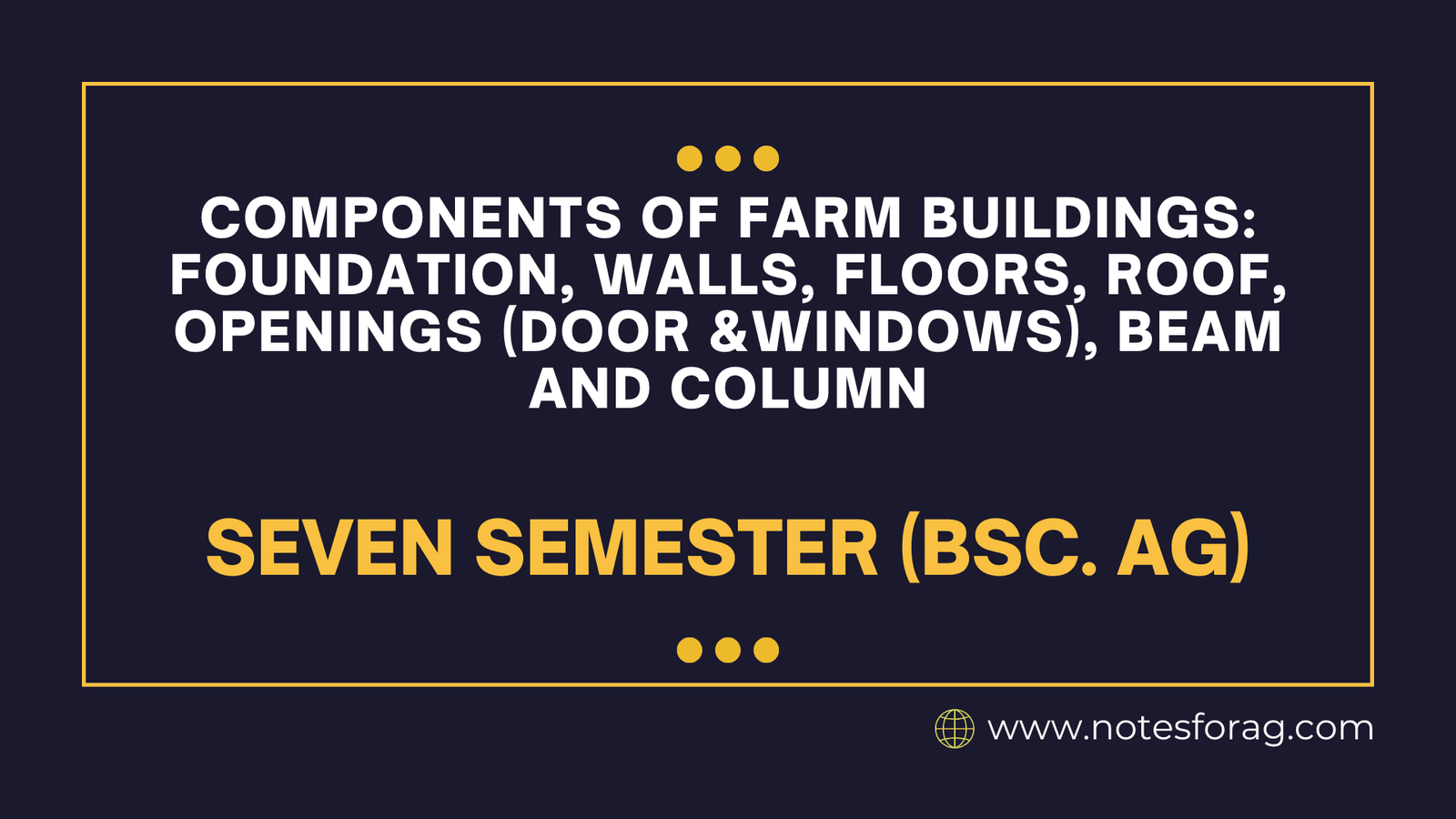What is Farm buildings ?

Farm buildings are structures designed for agricultural use, providing shelter for livestock, storage for equipment and supplies, and space for processing crops. They include barns, silos, stables, and workshops, tailored to meet the specific needs of farming operations.
Farm buildings are essential for agriculture, providing shelter for animals, storage for equipment, and space for processing crops. Farm buildings provide shelter for livestock, storage for equipment and supplies, and space for processing crops. They are essential for efficient agricultural operations.
Table of Contents
Components of Farm Buildings
Understanding the key parts of these buildings foundations, walls, floors, roofs, openings (like doors and windows), beams, and columns is crucial for creating effective structures.
Foundation
The foundation is the base that supports the entire building. It needs to be strong enough to handle the weight above and stable to prevent shifting or settling. Common types include:
Concrete Slabs: Durable and easy to clean, making them great for places where machinery and animals are housed.
Pier and Beam Foundations: Good for areas with poor drainage, lifting the building off the ground to reduce moisture problems.
Crawl Spaces: Allow for airflow and access to plumbing, providing stability while keeping the building elevated.
Choosing the right foundation depends on the soil type and how the building will be used.
Walls
Walls protect the building from weather and keep animals secure. Common materials include:
Wood: Used in smaller barns but needs maintenance to avoid rot and pests.
Metal: Steel siding is strong and low-maintenance, great for larger barns.
Concrete: Very durable and provides good insulation, often used for permanent structures.
The right walls can make a big difference in energy efficiency and protection from the elements.
Floors
Farm building floors must be strong enough to handle heavy loads and easy to clean. Options include:
Concrete Floors: Popular for barns due to their durability; they can be designed with drainage for easy cleaning.
Dirt Floors: More traditional but require management to prevent mud.
Tile or Rubber Flooring: Comfortable for animals and easy to maintain, often found in dairy barns.
The choice of flooring impacts how the building functions and the comfort of the animals.
Roof
The roof keeps the building safe from rain, snow, and sun. Important factors include:
Slope: A steep roof helps with water runoff and prevents snow buildup.
Materials: Metal roofs last a long time, asphalt shingles are cost-effective, and thatch is traditional in some regions.
Ventilation: Features like vents help manage heat and moisture inside the building.
A well-designed roof can extend the life of the building and improve comfort for animals.
Openings (Doors and Windows)
Openings are important for access and airflow. Key points include:
Doors: Large sliding or overhead doors allow for easy entry of equipment and animals, while smaller doors are for people.
Windows: Provide light and ventilation, enhancing the building’s comfort. Options range from glass to strong plastic.
Properly placed openings improve energy efficiency and the wellbeing of animals.
Beams and Columns
Beams and columns are essential for keeping the structure strong. They support the roof and help distribute weight evenly:
Materials: Steel is often used for its strength, while wood can add a natural look.
Design: The size and spacing depend on the building’s purpose and layout. Proper support is necessary to prevent sagging or collapse.
Choosing the right materials and designs for beams and columns is vital for safety and effectiveness.
Conclusion
Every part of a farm building is important for its overall function, safety, and durability. By carefully selecting materials and designs for the foundation, walls, floors, roofs, openings, beams, and columns, farmers can create buildings that enhance productivity and provide a safe environment for both animals and equipment. Investing in
quality construction leads to better performance and protection of agricultural assets.
Frequently Asked Questions (FAQ)
What is the purpose of a farm buildings?
Farm buildings provide shelter for livestock, storage for equipment and supplies, and space for processing crops. They are essential for efficient agricultural operations.
What types of foundations are commonly used for farm buildings?
Common foundation types include for farm buildings include concrete slabs, pier and beam foundations, and crawl spaces. The choice depends on soil conditions and the building’s intended use.
Related Articles

